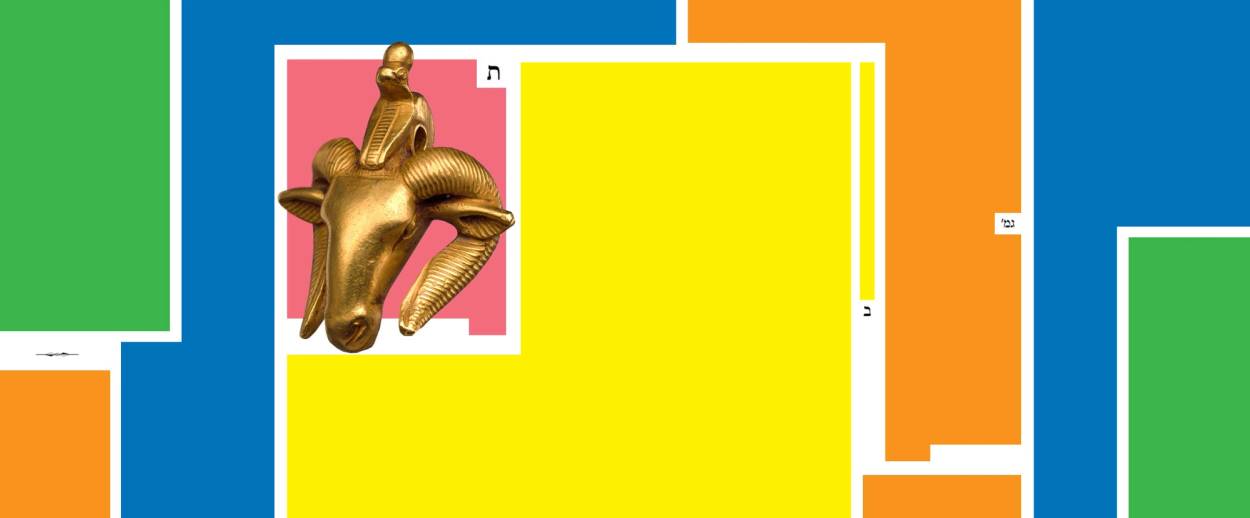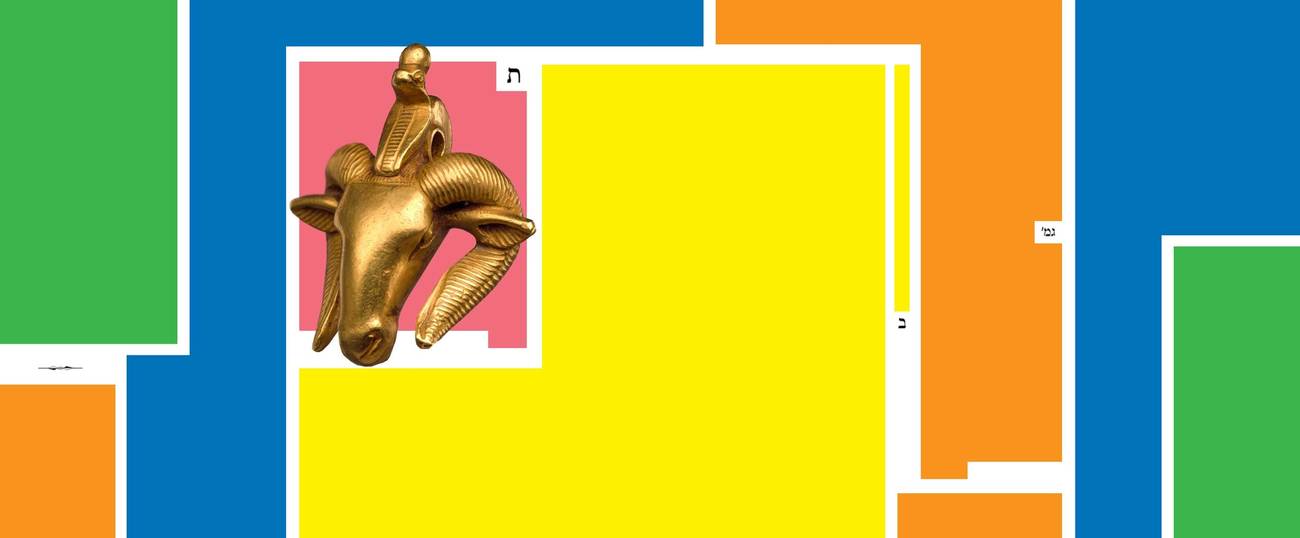Sacrificial Ram
Sacred meat, slaughtered animals, and blood on the altar, in this week’s ‘Daf Yomi’ Talmud study




Literary critic Adam Kirsch is reading a page of Talmud a day, along with Jews around the world.
Seder Kodashim, the division of the Talmud devoted to the Temple and its sacrifices, concludes with a group of five short tractates. Karetot, which Daf Yomi readers recently completed, focused on the sins for which a person is liable to receive karet, the punishment of being “cut off.” It belongs in Seder Kodashim because the tractate is primarily about the rules for the offering one must bring if one commits a karet-worthy transgression unintentionally.
This week we began Tractate Me’ila, which deals with a different kind of sin: the misuse of property, such as animals, that have been consecrated to God. This concept originates in Leviticus 5:15, where the Torah says that “if anyone commits a trespass and sins through error in the sacred items of the Lord,” he is obligated to pay back the value of the item he misused plus one-fifth, as well as offering a sacrificial ram. The concept of me’ila has come up throughout the Talmud—I remember that near the beginning of the Daf Yomi cycle, the rabbis debated whether resting in the shade of the Temple walls was an act of me’ila, since it involved appropriating a part of God’s sanctuary for personal use.
In the first chapter of Tractate Me’ila, however, the focus is strictly on me’ila that involves sacrificial animals. In particular, the rabbis are concerned to figure out exactly when in the sacrificial process an animal becomes susceptible to misuse, and when the prohibition on misuse expires so that it can be eaten freely. The answer lies in the phrase that begins the mishna on Me’ila 2a: “Offerings of the most sacred order.” These are offerings that belong wholly to God, so that any human being who eats them or makes use of them is trespassing on God’s prerogatives. Once an animal is consecrated to God for sacrifice, it belongs to Him and becomes an offering of “the most sacred order.”
However, with most offerings, there comes a time when most or all of the meat can be eaten by the priests. At that stage, the law of me’ila no longer applies since the sacrifice no longer belongs to “the most sacred order”—that is, it is no longer exclusively God’s. Thus “any sacrificial animal that had a period of fitness to the priests … one is not liable for misusing it,” Rabbi Yehoshua explains in Me’ilah 4b.
But when does sacrificial meat change from being God’s property to being human property? Bar Kappara laid out three possibilities: The change in status might happen when the animal is slaughtered, or when its blood is sprinkled on the altar, or when the meat is actually ready for the priests to eat it. In the end, the mishna on Me’ila 7b decides that the act that marks the transition of the sacrificial animal from God’s property to human property is the sprinkling of its blood on the altar, which occurs after the blood gushing from its throat is collected in a vessel. “The status of offerings of the most sacred order is that before the sprinkling of blood, one is liable for misusing” their meat, says the mishna. After the blood is sprinkled, me’ila no longer applies.
Most of the first chapter of Tractate Me’ila has to do with the kind of borderline cases that the rabbis love to explore, since they offer an opportunity to clarify underlying concepts. What happens if there is an error in the slaughtering process—for instance, the animal is killed in the southern half of the Temple courtyard, rather than in the northern half as it is supposed to be? Or what if it is not slaughtered during the daytime, as prescribed, but at night?
One might think that in this case, since the slaughter wasn’t carried out properly, the animal never became sacred and so its meat could be eaten without incurring me’ila. But the opposite turns out to be true: Such animals are still subject to me’ila, and in fact they can never lose that status, so no one can ever derive benefit from them. The reason is that the animal’s sacredness attached to it from the moment it was consecrated for sacrifice—that is when it became an offering of the most sacred order. Ordinarily, sprinkling its blood on the altar is what allows it to lose that status. But when the slaughter is carried out incorrectly, the blood can’t be sprinkled, so there is no way it can become valid for priestly consumption. It remains in a kind of limbo state, and presumably the only thing that can be done is to discard it.
In the course of this discussion, the Gemara in Me’ila 2b presents a debate between Rabba and Rav Yosef on a related subject. Say that an animal is improperly slaughtered, but its meat and blood “ascend” to the altar before anyone realizes the error. Is it better to remove them from the altar, calling off the sacrifice, or to go through with the sprinkling of the blood and the burning of the sacrificial portions? Rabba thinks it’s better to call things off: “If they ascended, they shall descend.” Rav Yosef says it’s better to complete the ritual: “If they ascended, they shall not descend.” The discussion is pursued at length, with each side invoking precedents and authorities, but neither sage prevails, and in the end the Gemara says teiku—“It shall stand unresolved.” Of course, neither of these sages ever witnessed a sacrifice in their lives, since they lived long after the Temple was destroyed. But one hallmark of Talmudic thought is being passionate about the impossible.
***
Adam Kirsch embarked on the Daf Yomi cycle of daily Talmud study in August 2012. To catch up on the complete archive, click here.
Adam Kirsch is a poet and literary critic, whose books include The People and the Books: 18 Classics of Jewish Literature.